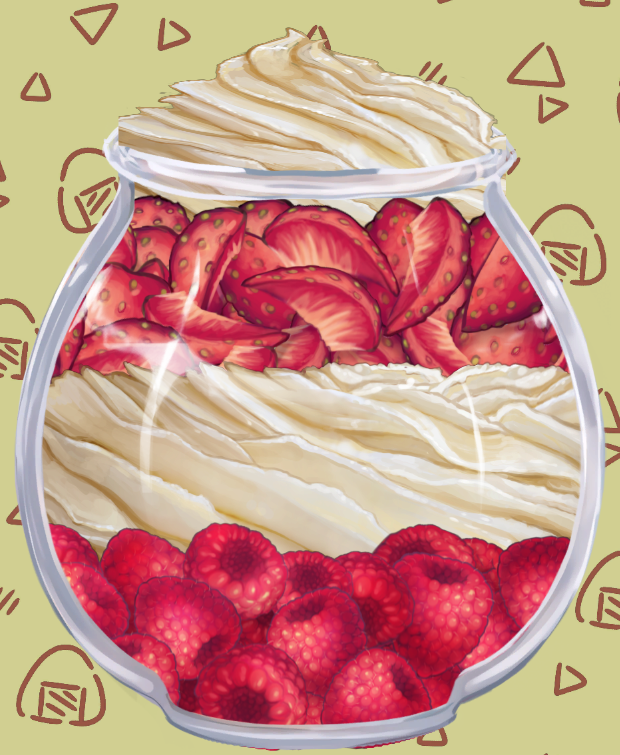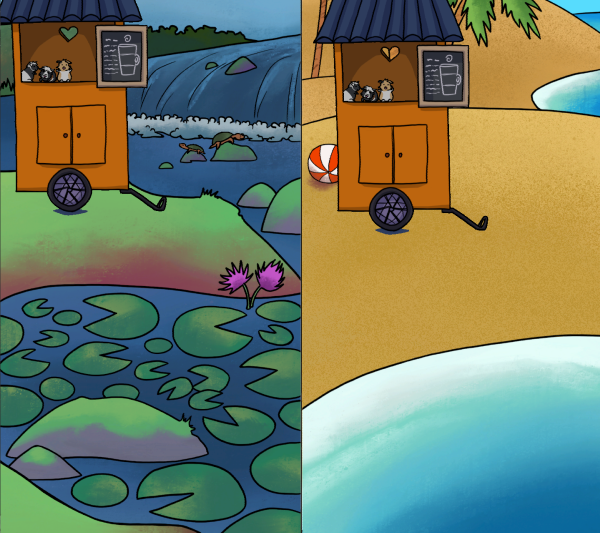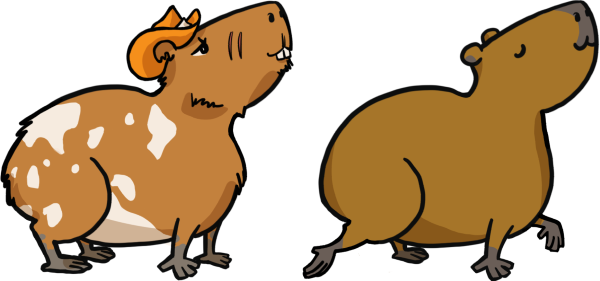Threads Unbound Out Now!
Threads Unbound, the fourth book in the Triple Strike light novel series, is out now through Amazon, Kobo, Barnes & Noble and itch.io! It picks up one ye...
Ursula K. Le Guin discussed the emphasis on conflict as the central element in storytelling, saying “conflict is one kind of behavior. There are others, equally important in any human life, such as relating, finding, losing, bearing, discovering, parting, changing. Change is the universal aspect of all these sources of story. Story is something moving, something happening, something or somebody changing.”
With her typical no-nonsense sharpness, Le Guin said this conflation of story with conflict “reflects a culture that inflates aggression and competition while cultivating ignorance of other behavioral options.” While I certainly don’t disagree with that assessment, I think the other half of it is that creating a story that doesn’t center around conflict is harder than making one that does.
If that is true in literature and film, then it’s even more true in video games. There is a reason so many games feature violence as a central mechanic. The act of hitting things is very tangible, and it provides a satisfying interaction created by pressing a button. Imagine if Doom had the exact same level design, enemy layout, and weapons feel, but instead of shooting demons, you popped different types of confetti on cute critters. The timings and interactions would be roughly the same, but it would have a completely different vibe with much less tension. While it might be a cute experiment at a game jam that evokes a few chuckles, I doubt it would have the longevity of the Doom franchise.
I suspect making a game without conflict requires focusing on that as a core tenet of the game. There are whole genres for these styles of games, and some obvious games that come to mind are Animal Crossing, the Harvest Moon genre, and Journey by thatgamecompany. Death Standing has very tangible conflict, and while the game nominally exists as an open world, third person shooter in Triple A space, it’s really like nothing else in those genres.
Hideo Kojima said, when discussing the game “the stick is the first tool that mankind created to put distance between himself and bad things – to protect himself. The second tool mankind created is a rope. A rope is a tool used to secure things that are important to you. Most of your tools in action games are sticks. You punch or you shoot or you kick. The communication is always through these sticks. I want people to be connected not through sticks, but through what would be the equivalent of ropes.”
It’s an interesting twist on the typical third-person shooter style of conflict, and you can see this idea reflected in all aspects of the game – not just the enemy encounters and weapons kit Sam Porter Bridges has, but in the way multiplayer works and even the world design and quest system function.
Of course, Capybara Cafe is no Death Stranding. Capybara Cafe was conceived at the start of the pandemic as a stress-free game. What does a game with no pressure at all look like? With this as the starting concept, I designed it as simple puzzle game where capybaras express the sort of dessert they’re looking for and the player constructs a parfait according to the requested flavor profile. It was expanded to include coffees and teas, but the basic game loop is the same.
 |
| An example of a parfait the player can create for a customer in Capybara Cafe. |
The player opens shop for a day, capybaras come at random intervals to request drinks, the player fulfills the order and receives a score (hidden) based on how well you met the capybara’s request. Since the goal is “no stress” you are always making progress even if you make something the capybara isn’t looking for.
It’s intended to be impossible to run out of money, and the “friendship” you build up with the story-based capybara will always grow (albeit slowly if you can’t figure out their orders). Even the day-night cycle, while it limits the ingredients you can use since the player can only purchase ingredients at the start of the day, is not locked behind time-gating or energy mechanics, which often lead to stress around “properly” managing your time.
 |
| Lily Pond and Beachside Resort are two of the locations where you can choose to set up your drink stand. |
Neko Atsume was a big inspiration for the concept, and Capybara Cafe definitely has more in common with that and Stardew Valley than it does with Death Stranding in terms of player stress levels, but I am fascinated by this idea of “ropes” that Kojima is playing with, and I tend to like a little more narrative tension to keep me coming back.
The tension in Capybara Cafe is built around anticipation. Certain capybaras can build up friendship points, which allows you to learn more about their daily lives and hidden issues they’re struggling with. These issues are intended to be relatively gentle (they’re capybaras after all), but there’s a balance between so casual, the story feels meaningless and so much story, the pacing feels off since progress is semi-random depending on which capybaras choose to visit that day. Thus the conflicts ideally should be compelling but not complicated.
 |
| An example of one of the regulars, Texas Toast, versus one of the random capyabara visitors. |
Since the story is only conveyed through the conversations between the capybara and you, a guinea pig barista, the dialogue needs to capture that interest while being self-contained. Hints into the capybaras’ personal lives need to be short. It must fit within the same space requirements as a standard request and response.
The only large chunk of dialogue comes during each capybara’s story climax, which happens when you’ve both maxed out friendship and discovered the capybara’s favorite drink. The capybara asks for advice and it’s up to you to help them. Thus the tension comes from the story of the capybaras’ lives, while the play mechanics themselves (i.e. the drink mixing) remains a low-key casual activity. Just playing through each capybara’s story won’t take long, but with plenty of recipes to discover, the drink mixing itself should have a longer tail of play.
While Capybara Cafe is certainly no art house game, even in the casual space, I think there’s room to explore interesting concepts and approaches to media.
Questions or comments? Just love capybaras? Please contact me at akulagames@proton.me, or join the Akula Games mailing list for blog and product updates.
Threads Unbound, the fourth book in the Triple Strike light novel series, is out now through Amazon, Kobo, Barnes & Noble and itch.io! It picks up one ye...
Pyre is the pyrean homeworld in Triple Strike, and while the first two books don’t go into much detail about it, Pyre will feature more heavily in later book...
The ma’jenn will play an increasingly large role from Triple Strike book 3 onward, which is very exciting for me. I love the ma’jenn quite a bit, and while p...
There are a lot of languages in Triple Strike, and in hindsight, I guess I should have had some sort of “universal translator” technology instead of making a...
While Amazon will remain (for now) the only place to purchase a physical copy of Triple Strike, I’ve decided to add itch.io as one of the vendors. This will ...
Ursula K. Le Guin discussed the emphasis on conflict as the central element in storytelling, saying “conflict is one kind of behavior. There are others, equa...
I got distracted this past year working on a light novel. “Light novels” are a style of novel popular in Japan that are essentially short (e.g. ~50k words), ...
Akula Games has been on hiatus for the past few years, both in terms of contracting and working on personal development, but I’m about ready to get back into...